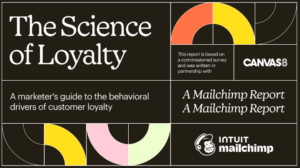Marketers should move beyond broad-based demographics and embrace more sophisticated targeting models to reflect the impact of financial pressures on consumers and improve their campaign planning, new Target Group Index (TGI) research from Kantar Media shows.
The business looked at how rising costs are influencing people’s behaviour and attitudes as interest rates hit a 15-year high in August. Given recent mortgage shocks, Kantar Media found that living circumstances are sometimes more likely to indicate alignment between consumer groups than age, highlighting the challenges of using demographic shorthand alone. For example, 27% of 21 to 26-year-olds living at home with parents say they prefer to buy premium goods and services, the same proportion as over 55-year-olds who own their home outright, suggesting that exposure or not to the housing market can be a better indicator of buying preferences.
Sarah Sanderson, managing director of TGI at Kantar Media, commented: “The cost of living crisis is hitting people in very different ways. Marketers must understand these trends to make sure their messaging lands in the right way with the right people. The trouble is many campaigns are still planned largely using demographics, but this misses the nuance of how people’s lives are being impacted. Our TGI data shows that even labels like homeowner are too broad brush now given the mix of financial pressures consumers are facing.”
Kantar Media isolated those who expect to renew their mortgage in the next 12 months, around 1.5 million people, to emphasise the distinct groups of consumers that the current crisis has created. It found that they have a dramatically different outlook despite largely reflecting the population of Great Britain as a whole. Only 47% of this group say that they are ‘perfectly happy’ with their standard of living – a fall of almost 20% in just the last 12 months. In contrast, 64% of people who own their home outright are happy with their living standards.
Kantar Media’s TGI data found stark gaps in mortgage renewers’ cost consciousness and spending intentions versus the average consumer. The number of people who agree that price is an important factor when buying toiletries and cosmetics has risen by 18% among this group, and there has been a 8% jump when it comes to food. This compares to increases of 7% and 6% respectively for all adults. Mortgage renewers are far more likely to delay spending on big ticket items than the average adult, reporting much sharper declines in their intention to buy goods:
| Intention to purchase in the next 12 months… | All adults | Mortgage renewers |
| Fridge | +8% | -64% |
| Tablet computer | -16% | -39% |
| Car (in the next two years) | -7% | -22% |
| TV | -4% | -18% |
Source: Great Britain TGI August 2023 (compared to Great Britain TGI August 2022)
Sanderson said: “Demographics have a role to play but they’re just one piece of the jigsaw – mortgage renewers are in this predicament largely by chance rather than anything to do with their age or gender. While campaign planning teams probably know the limitations of demographic models, their apparent simplicity can be seductive. However, now more than ever, marketers have to take into account the full scope of consumers’ attitudes, behaviours and circumstances. If not, they risk misrepresenting the true picture and wasting budgets at a time when they can ill afford to.
“We’ve got the data and tools to identify audiences in far more sophisticated ways now and to boost campaign effectiveness as a result. It would be far riskier to ignore this opportunity than to stick with the status quo.”
Kantar Media has recently launched a new practical guide to audience segmentation, Beyond Bias.









